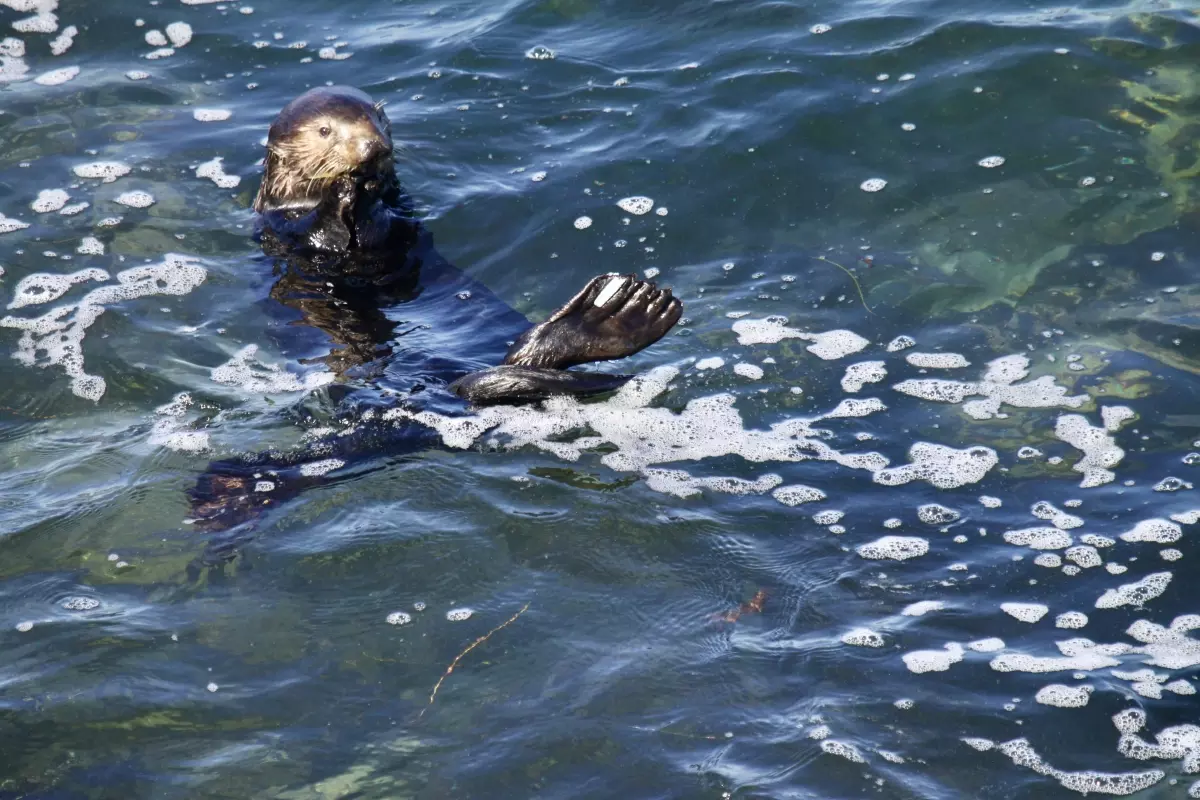Scientists reveal why California’s angriest otter has mellowed out
The five-year-old animal had gained a reputation as ‘California’s angriest otter’ after she was captured on social media attacking surfers in Santa Cruz and biting their boards
Scientists have given a startling reason for why “California’s angriest otter” has been so angry – and why she has now mellowed out.
The notorious sea otter 841, known for terrorising surfers off the California coast, was recently spotted with a little baby pup.
Professional photographer Mark Woodward, the otter’s most committed reporter of her mischievous activities, announced the good news on his X account that 841 had given birth.
“This is so amazing. I suspected she might have been pregnant due to her increased belly size,” he wrote in a post.
“Before today, [I] last saw her three days ago. She’s a bit far out there, but from my vantage point, both mom and pup are doing fine.”
The US Fish and Wildlife Service officially confirmed the pup’s birth in a statement on Thursday.
The agency said they could not confirm the otter had been pregnant without capturing the animal for an evaluation.
However, they now believe that “hormonal surges related to pregnancy” could have caused her aggressive behaviour towards the unsuspecting kayakers and surfers.
The five-year-old animal had gained a reputation as “California’s angriest otter” after she was captured on social media attacking surfers in Santa Cruz and biting their boards.
The Wildlife Service said at the time that they tried to capture the angry otter and take her to a zoo or an aquarium for the safety of both herself and the public.

But, attempts to capture the otter were unsuccessful – and 841’s fans loved to see it.
An online following of people keen to keep up to date with her life on the run grew, even leading to sales of t-shirts and tote bags in solidarity with the angry animal.
Since giving birth, she seems to have retired her surfboard-stealing antics and has been seen lolling about with her newborn.
Now that the otter has given birth and seems to have found peace, officials say they have no plans to capture her and her pup.
Instead, they will monitor her behaviour from a distance.
Yet it remains to be seen whether her behaviour will take a turn again.
The otter has given birth twice before; her first survived, but her second born in the spring did not, reports the local outlet.
Just four months after she was spotted with one of her other pups, 841 was seen getting up to her old tricks.
While pregnancy hormones are thought to be one of the reasons she displayed angry behaviour, her online fans warn that human interaction also doesn’t help.
Mr Woodward told the Los Angeles Times that he had witnessed several boaters and kayakers harassing the otter by getting too close to her, potentially causing her to be in distress and threatening her safety.

There is new concern that sea otter 841’s viral fame may attract more visitors to come see the new pup – when it is crucial to keep a safe distance, especially now the otter is foraging for two.
He wrote on X that if people do want to see the newborn, they should observe them from cliffs around West Cliff Drive rather than on the shore’s edge.
The US Fish and Wildlife also encourages people who want to visit the otters to keep at least 60 feet away from them; if this is compromised, then the survival of the new baby could be in danger.
The officials say that sea otters do not have energy reserves like whales or seals, so they have to forage for food equating to 20 to 30 per cent of their body mass to keep their energy up. With a baby, it is crucial their energy is not used up on humans.
Sea otters are protected by the Endangered Species Act, Marine Mammal Protection Act, and California state law.
A violation could land an individual with fines up to $100,000 or one year of jail time.
Join our commenting forum
Join thought-provoking conversations, follow other Independent readers and see their replies
Comments
Bookmark popover
Removed from bookmarks